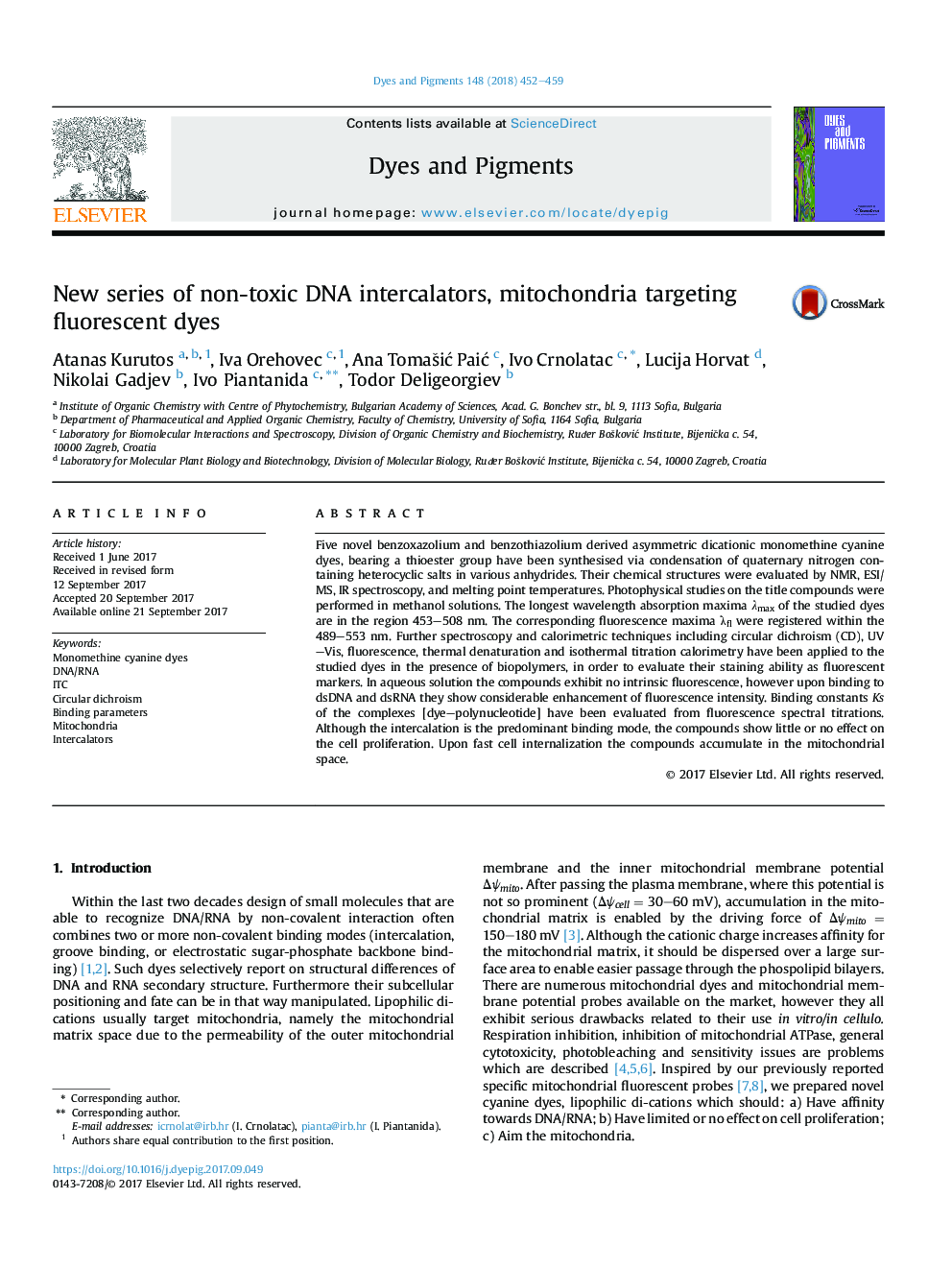| Article ID | Journal | Published Year | Pages | File Type |
|---|---|---|---|---|
| 4765739 | Dyes and Pigments | 2018 | 8 Pages |
â¢5 novel benzoxazolium and benzothiazolium derived dicationic monomethine cyanine dyes.â¢Interaction with DNA/RNA: Intercalation with dsDNA; groove binding with dsRNA.â¢No antiproliferative activity on cell cultures.â¢Fluorescence emission in the mitochondrial space upon cellular uptake.
Five novel benzoxazolium and benzothiazolium derived asymmetric dicationic monomethine cyanine dyes, bearing a thioester group have been synthesised via condensation of quaternary nitrogen containing heterocyclic salts in various anhydrides. Their chemical structures were evaluated by NMR, ESI/MS, IR spectroscopy, and melting point temperatures. Photophysical studies on the title compounds were performed in methanol solutions. The longest wavelength absorption maxima λmax of the studied dyes are in the region 453-508 nm. The corresponding fluorescence maxima λfl were registered within the 489-553 nm. Further spectroscopy and calorimetric techniques including circular dichroism (CD), UV-Vis, fluorescence, thermal denaturation and isothermal titration calorimetry have been applied to the studied dyes in the presence of biopolymers, in order to evaluate their staining ability as fluorescent markers. In aqueous solution the compounds exhibit no intrinsic fluorescence, however upon binding to dsDNA and dsRNA they show considerable enhancement of fluorescence intensity. Binding constants Ks of the complexes [dye-polynucleotide] have been evaluated from fluorescence spectral titrations. Although the intercalation is the predominant binding mode, the compounds show little or no effect on the cell proliferation. Upon fast cell internalization the compounds accumulate in the mitochondrial space.
Graphical abstractDownload high-res image (203KB)Download full-size image
